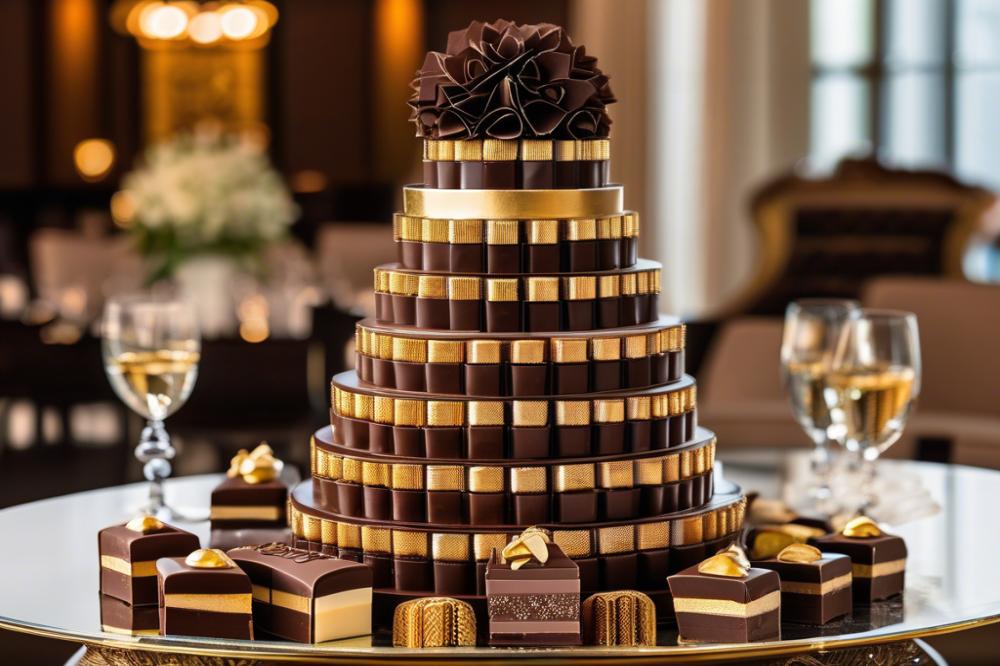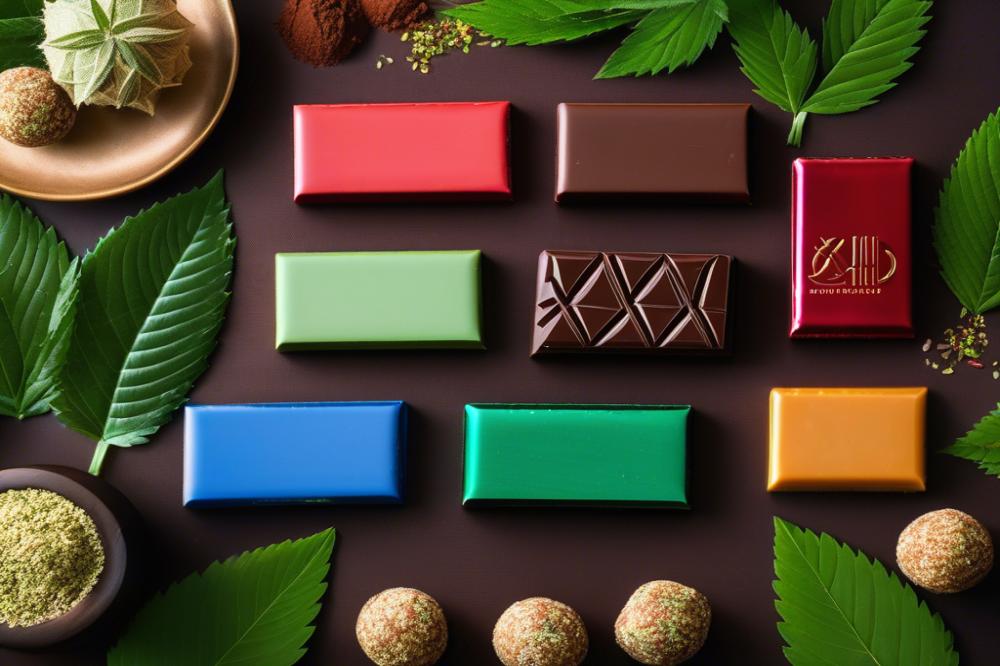The Art of Layered and filled chocolates: Trends and Techniques
The chocolate industry has flourished into a multi-billion dollar realm, captivating taste buds worldwide. Consumers today demand more than just sweetness; they seek experiences wrapped in confectionery art. This appetite for deliciousness has sparked a vibrant scene populated by artisan chocolatiers who craft gourmet chocolates with impressive flair.
layered chocolates, while a treat for the eyes and palate, also showcase the complex nature of chocolate making. These creations often involve various components like ganache, creams, or mousses, artfully arranged to create depth in flavor and texture. The skill lies in blending these ingredients perfectly, painting a picture of culinary mastery that consumers adore.
In the world of chocolate, trends shape preferences and inspire innovation. Techniques such as tempering chocolate achieve that delightful snap, forming a shell that hints at the surprise within. Chocolate decoration transforms simple treats into visually stunning masterpieces. As flavor combinations become bolder, the exploration of unexpected pairings breathes new life into classic filled chocolates.
Producers in this industry must stay on top of these trends and techniques. Consumer demands continually evolve, and appealing to these changing tastes can mean the difference between success and failure. Embracing creativity not only enhances the product line but also engages customers on a deeper level. Knowledge of chocolate molding and expert understanding of layering techniques can push a chocolatier’s craftsmanship to new heights.
The artistry of layered chocolates and filled chocolates, infused with innovative trends, highlights the endless possibilities within the sweet world of chocolate making. As we move further into this tasty landscape, one must appreciate both the craft and the artistry involved in producing these delightful confections.
The Appeal of Layered Chocolates

Visual attraction plays a major role in the popularity of layered chocolates. Colorful layers invite the eye and spark curiosity. When chocolate is molded into these vibrant shapes, a story begins with each bite. Elegant presentation turns these treats into art pieces. People enjoy sharing what looks good. It makes every moment special, especially during celebrations.
Texture contrasts make each bite exciting. Creamy ganache offers a smooth finish, while crispy layers provide a delightful crunch. This mix creates a unique experience. As you savor the different textures, your taste buds dance with pleasure. Various techniques like tempered chocolate add depth to the overall experience. Those layers hold surprises that unfold with each mouthful.
Flavor combinations serve to enhance the design of these confections. Sweet and savory blends create memorable experiences. Think of a rich dark chocolate layer paired with zesty orange. Such pairings wake up the senses. Gourmet chocolates often feature classic combinations, yet aged favorites can surprise. Artisan chocolates take this creativity further, experimenting with unusual tastes. Every bite is an adventure that invites exploration.
Chocolate decoration adds another layer of interest. Artistic designs capture attention even before the treat is tasted. This attention to detail showcases craftsmanship. Each layer can tell its own story, creating an intricate narrative. It’s not only about flavors anymore; looks matter just as much. In a world where trends constantly shift, these techniques stand out. They elevate the craftsmanship involved in confectionery, making every creation a work of art.
Innovative Techniques in Layered Chocolate Creation

The art of crafting layered chocolates involves a variety of chocolate techniques. Many artisans use ganache to build rich and complex layers. This smooth mixture, made from chocolate and cream, lends itself well to a vast array of flavor combinations. Almond, raspberry, and even chili can find their way into these rich fillings, enhancing the overall experience of each bite.
Tempering chocolate is another critical process that helps achieve perfect layers. It involves carefully heating and cooling chocolate to stabilize it. This technique results in a glossy finish and a satisfying snap. When done correctly, tempered chocolate can elevate the visual appeal of gourmet chocolates exponentially.
Chocolate molding plays a vital role in creating intricate shapes and designs. Specific molds allow chocolatiers to shape their creations with precision. These molds can produce anything from elegant truffles to playful figures. The right choice of mold can add a delightful touch, attracting customers in a competitive confectionery market.
In addition, chocolate decoration techniques provide an opportunity to showcase artistic flair. Techniques like airbrushing and painting with cocoa butter can enhance the visual aspects of the chocolates. Edible gold leaf and vibrant colors can elevate artisan chocolates into stunning pieces. Each layer becomes not just a treat but a work of art.
Chocolate trends continue to evolve. Chefs experiment with textures and flavors, pushing traditional boundaries. By exploring new combinations and techniques, they create memorable experiences for chocolate lovers. This innovative spirit keeps the world of confectionery dynamic and exciting.
Current Trends in Layered and Filled Chocolates

Artisan chocolates are changing the landscape of confectionery. Chefs and chocolatiers are experimenting with flavor combinations like never before. Popular choices include spicy chili, fragrant lavender, and even unexpected herbs. These unique flavors captivate chocolate lovers and entice them to explore new options. Consumers crave diversity and adventure in their sweet treats.
The luxury markets are placing a strong emphasis on gourmet chocolates. High-end brands are showcasing their skills with intricate chocolate molding. These makers carefully temper chocolate to create glossy, perfect finishes. Beautiful packaging enhances the appeal of these chocolates. It is all about creating a complete experience, from taste to presentation.
Innovation in chocolate decoration is thriving. Artists use techniques like hand-painting and airbrushing to create intricate designs. Modern aesthetics play a big role in attracting buyers. Eye-catching colors and patterns draw attention. These visually appealing chocolates often become centerpieces at events or gifts for special occasions.
Health-conscious trends are reshaping chocolate offerings as well. Many consumers are seeking reduced sugar options. This shift is driving chocolatiers to experiment with natural sweeteners. Organic ingredients also gain traction as people become more concerned with what they consume. Makers are responding to these demands with healthier ganache recipes and cleaner labels.
Offering a range of flavors and techniques keeps the market fresh. As trends evolve, one theme remains clear: personalization matters. Chocolate lovers want to connect with their treats on a deeper level. The world of filled chocolates continues to grow, reflecting these changing tastes and preferences.
Flavor Combinations for Layered Chocolate Experiences
Popular and Emerging Flavor Pairings
Layered chocolates open the door to exciting flavor combinations. Think dark chocolate with sea salt and hints of caramel. This pairing offers a savory twist that balances sweetness perfectly. On the other hand, flavors like raspberry and white chocolate create a vibrant explosion in each bite. Observing trends, combinations such as spicy chili with rich chocolate are becoming more common. They offer a dynamic experience that excites the palate. Another rising star is the use of herbs, like basil or mint, to add freshness. This technique adds layers of complexity that traditional flavors might lack.
The Role of Regional Ingredients in Crafting Unique Flavors
Incorporating regional ingredients can elevate artisan chocolates to new heights. Utilizing local fruits, nuts, or spices gives a distinct character to each product. For instance, a chocolate filled with locally sourced pecans unapologetically reveals the region’s personality. Various cultures also inspire unique approaches by integrating traditional flavors into trendy confections. Combining lemon zest from coastal areas with dark chocolate can create a delightful contrast. This truly highlights the importance of sourcing ingredients that reflect a specific locale.
Seasonal Trends Influencing Flavor Selection
Seasonal trends play a significant role in flavor selection for gourmet chocolates. During fall, flavors like pumpkin spice and caramel apple capture the essence of the season. Chocolatiers often embrace these themes to create enticing offerings. Winter brings a focus on rich, comforting flavors like peppermint and eggnog. Chocolate decoration follows suit, utilizing festive motifs. As spring arrives, floral notes like lavender or cherry blossom gain popularity. Think of surprise fillings, such as floral ganache, that tempt chocolate lovers. Summer often showcases fruit flavors, providing a refreshing twist on classic treats. Observing these shifts allows for creative experimentation and keeps consumers engaged.
Challenges in Layered Chocolate Production
Quality Control in Layered and Filled Chocolates
Maintaining high standards is crucial when producing artisan chocolates. Each layer needs to meet specific criteria. Small mistakes can lead to big flavor issues. Quality control checks help identify inconsistencies before chocolates reach customers. Ensuring the right balance also involves inspecting ingredients. This attention to detail is what sets gourmet chocolates apart.
Balancing Flavors and Textures in Layered Designs
Creating a harmonious blend of flavors is no easy task. chocolate techniques often require a deep understanding of taste profiles. When experimenting with flavor combinations, layering is important. One layer could be fruity while another remains rich and creamy. This balance keeps the taste exciting. However, it’s essential to remember that textures play a role too. A smooth ganache may need a crisp layer for contrast. Finding that sweet spot can make or break a product.
Handling Temperature and Humidity in Confectionery
Temperature control presents another challenge in the chocolate molding process. Chocolate must be tempered correctly to achieve that glossy finish. A shift in temperature can cause a chocolate piece to bloom, ruining its appearance. Humidity levels also affect drying times for decorations. Chocolates may lose their crispness if the environment is too humid. Monitoring both factors is a key part of creating stunning confections. Proper conditions are fundamental to success in the chocolate-making journey.
Wrapping it Up
The art of creating layered chocolates brings together skill and creativity. Bakers and chocolatiers have pushed boundaries in flavor and design. Each layer can tell a story, offering a delightful journey for the taste buds. A combination of textures and tastes makes each bite special. People are eager to try new experiences, and layered confections promise just that.
Looking ahead, chocolate trends are likely to continue evolving. Innovations in flavors and presentation will captivate chocolate lovers around the world. Expect to see more exotic ingredients incorporated into classic recipes. Sustainability will also play a big role, with many seeking ethically sourced cocoa. As health-conscious choices emerge, lighter and alternative sweeteners may fill pastry shops. These shifts will open doors to creativity and exploration in the craft.
It’s essential to experiment with chocolate techniques for anyone passionate about confectionery. Allow yourself the freedom to play with flavors, textures, and appearances. Small adjustments can lead to incredible transformations in your creations. Remember, every chocolate piece doesn’t have to be perfect; it should reflect your journey as a maker. Dive in, have fun, and enjoy the delightful world of chocolate!



